ILLUSTRATED DICTIONARY OF
HISTORIC
ARCHITECTURE Edited by Cyril M. Harris Dover Publications, Inc., New YorkCopyright 1977 by Cyril M. Harris.All rights reserved. This Dover edition, first published in 1983, is an unabridged and unaltered republication of the work originally published by McGraw-Hill Book Company, N.Y., in 1977 under the title Historic Architecture Sourcebook.Library of Congress Cataloging in Publication DataHistoric architecture sourcebook.Illustrated dictionary of historic architecture.Reprint. Originally published: Historic architecture sourcebook. New York: McGraw-Hill, c 1977.1.
Dover Publications, Inc., New YorkCopyright 1977 by Cyril M. Harris.All rights reserved. This Dover edition, first published in 1983, is an unabridged and unaltered republication of the work originally published by McGraw-Hill Book Company, N.Y., in 1977 under the title Historic Architecture Sourcebook.Library of Congress Cataloging in Publication DataHistoric architecture sourcebook.Illustrated dictionary of historic architecture.Reprint. Originally published: Historic architecture sourcebook. New York: McGraw-Hill, c 1977.1.
Architecture Dictionaries. I. Harris, Cyril M., 1917- II. Title.[NA31.H56 1983]720.32182-17776International Standard Book Number ISBN-13: 978-0-486-24444-0 ISBN-10: 0-486-24444-X Manufactured in the United States by Courier Corporation 24444X16 www.doverpublications.com PREFACE Properly presented and illustrated, historic architecture is enjoyable in itself. There is much practical value in its study as well. Let me cite one personal example.
In 1965, I joined three colleagues in designing a thousand-seat theatre for the U.S. Department of State under a Ford Foundation grant. We were under no constraints other than a single formidable onethe entire theatre had to be capable of being disassembled and fitted into two large cargo aircraft. Three years and 27 different schemes later, we had developed a theatre-in-the-round which met all design requirements. In plan it was essentially two ancient Roman theatres with their seating areas (see cavea, 1, page 100) joined to form a circle. After our final design was complete, out of curiosity (for ancient Greek and Roman theatres first stimulated my interest in historic architecture some years ago), I compared the slope of our seating with the average slope of the seating in a number of ancient Roman theatres.
Our slope was within one degree of that average. Then I compared our aisle arrangement with that recommended for Roman theatres by Vitruvius in his Ten Books on Architecture written about the time of the birth of Christ. They were identical. In these respects I had the curious feeling that we had reinvented the wheel. The Historic Architecture Sourcebook is a unique presentation of the history of architecture in the form of 5000 lucid definitions of terms illustrated by 2100 line drawings. The subject areas include the following architectural periods:
| Ancient | Islamic |
| Greek and Hellenistic | Mesoamerican |
| Roman | Romanesque |
| Early Christian | Gothic |
| Chinese | Renaissance |
| Japanese | Modern |
| Indian |
These subjects cover a span of 5000 years, and each is treated in detail.
They will be valuable to the layman, the student, and the specialist interested in history, architectural history, art history, or art appreciation. The definitions contain enough information to guide a reader toward appropriate reference books if he wishes to pursue any topic in greater depth. Both the definitions and the illustrations are complete enough to serve as important research tools, because emphasis has been placed on clarity and accuracy. The line drawings have been chosen to stress the significant aspects of architectural styles as well as details. For many years, as a hobby, I collected very old books on historic architecture, and built a collection of over 12,000 line drawings which were alphabetized and individually mounted. To these I added several thousand photographs I had taken in many parts of the world, with a view of using them eventually in a book on historic architecture.
Many of these were included in the Dictionary of Architecture of Construction (McGraw-Hill, 1975). The entire collection has formed the basis for the illustrations in the present volume. The decision to use line drawings rather than photographs (with a few exceptions) is based upon the particular usefulness of such drawings in emphasizing salient features of the term being illustrated. The illustrations include (1) drawings chosen from my complete collection, which were redrawn or otherwise modified to emphasize essential details, (2) entirely new drawings, prepared when suitable illustrations could not be found, and (3) drawings which have been reproduced by permission of the copyright owners. Cyril M. Harris ACKNOWLEDGMENTS Many of my colleagues have been helpful in the preparation of the Sourcebook and I am grateful for their assistance.
I am particularly indebted to Professor Adolf K. Placzek, Librarian of Avery Library of Columbia University for his valuable advice and contributions during its preparation. In the initial editorial stages, Ross J. Kepler, my production editor at McGraw-Hill, offered many helpful suggestions. After his retirement, Betty Gatewood provided painstaking assistance in the production of the book. I also wish to thank Miye Schakne and others who provided skilled artwork for the illustrations.
The resources of Avery Library of Columbia University, the worlds largest architectural library, were invaluable in checking and cross-checking information. Acknowledgment is gratefully made to holders of copyrighted material who have granted permission for its reproduction. Particular thanks are due Abraham Ascher and the editors of the Newsweek Book Division, Newsweek, for permission to reproduce the drawing of the Kremlin from The Kremlin (New York, 1972); to George Kubler and the Pelican History of Art Series for five illustrations of Mesoamerican architecture from The Art and Architecture of Ancient America (Penguin Books, Baltimore, 1962), and to The Old-House Journal (Brooklyn, New York) for several drawings. CONTRIBUTORS The definitions in the Historic Architecture Sourcebook were prepared by a staff of experts. Contributors in particular fields are listed below. A DOLF K. A DOLF K.
P LACZEK , S.A.H. Avery Librarian; Adjunct Professor of Architecture, Columbia University (ARCHITECTURAL STYLES) E DGAR K AUFMANN J R ., H.A.I.A. Adjunct Professor of Art History and Architecture, Columbia University (RENAISSANCE ARCHI-TECTURE, MODERN ARCHITECTURE) E VERARD M. U PJOHN , M. A RCH . Professor Emeritus of Art History, Columbia University (CHURCH ARCHITECTURE, GOTHIC ARCHI-TECTURE) C YRIL M.
H ARRIS , P H .D. Professor of Architecture, Columbia University (CLASSICAL ARCHITECTURE, GENERAL HISTORIC ARCHITECTURE) J OSEPH M. S HELLEY , B. A RCH . Retired Associate Professor of Architecture, City University of New York; formerly Commissioner, Landmarks Preservation Commission, New York (CLASSICAL ARCHITECTURE) T AKASHI H LRAYAMA Professor Emeritus of Architecture, University of Tokyo (JAPANESE ARCHITECTURE) C. K.
C HANG , A.I.A. Architect, New York, NY. (CHINESE ARCHITECTURE) C URT M USER Research Associate, Museum of the American Indian (Heye Foundation), New York, NY. (MESOAMERICAN ARCHI-TECTURE) P AUL L AMPL , A.I.A. Design Coordinator and Associate, The Eggers Partnership, New York, NY. (MIDDLE EASTERN, ISLAMIC, AND INDIAN ARCHITECTURE) M ARVIN T RACHTENBERG , P H .D. Associate Professor of Fine Arts, New York University (MEDIEVAL ARCHITECTURE) In addition to these fields, definitions in several more specialized areas which were originally prepared for the Dictionary of Architecture and Construction have been included in this volume. Contributors include: J OSEPH S HEIN , A.I.A. Project Director, South Street Seaport Museum, New York, N.Y.
Next page
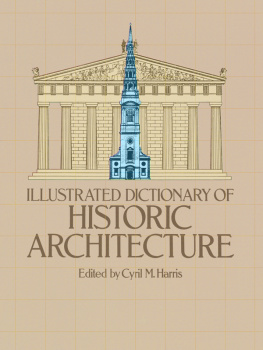
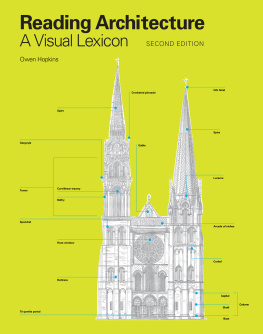
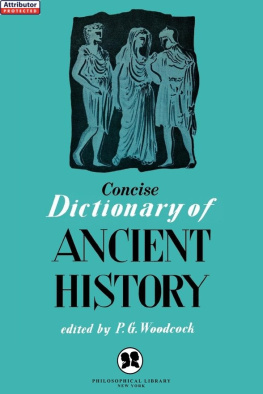
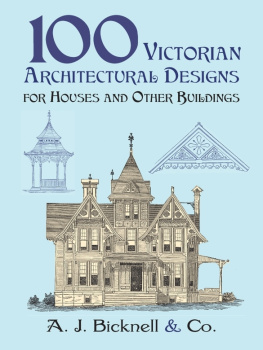
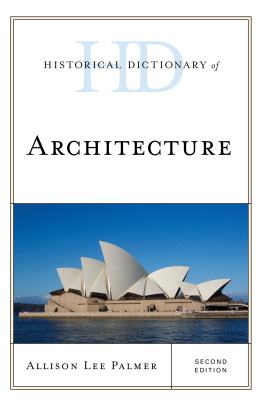

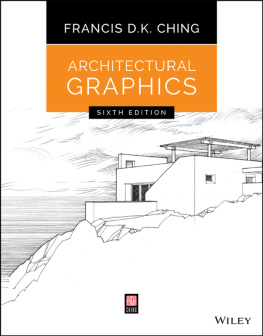
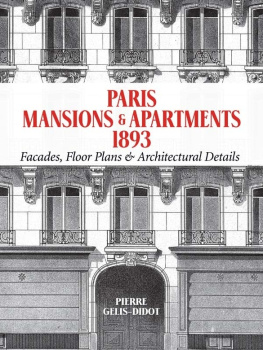


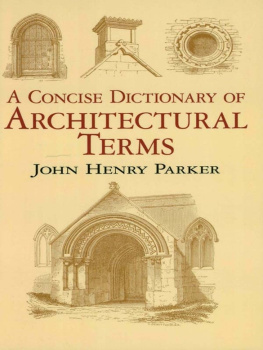
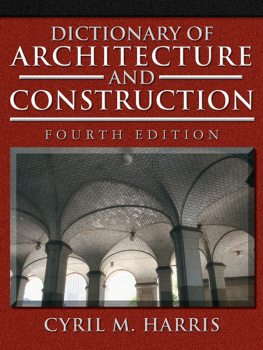
 Dover Publications, Inc., New YorkCopyright 1977 by Cyril M. Harris.All rights reserved. This Dover edition, first published in 1983, is an unabridged and unaltered republication of the work originally published by McGraw-Hill Book Company, N.Y., in 1977 under the title Historic Architecture Sourcebook.Library of Congress Cataloging in Publication DataHistoric architecture sourcebook.Illustrated dictionary of historic architecture.Reprint. Originally published: Historic architecture sourcebook. New York: McGraw-Hill, c 1977.1.
Dover Publications, Inc., New YorkCopyright 1977 by Cyril M. Harris.All rights reserved. This Dover edition, first published in 1983, is an unabridged and unaltered republication of the work originally published by McGraw-Hill Book Company, N.Y., in 1977 under the title Historic Architecture Sourcebook.Library of Congress Cataloging in Publication DataHistoric architecture sourcebook.Illustrated dictionary of historic architecture.Reprint. Originally published: Historic architecture sourcebook. New York: McGraw-Hill, c 1977.1.